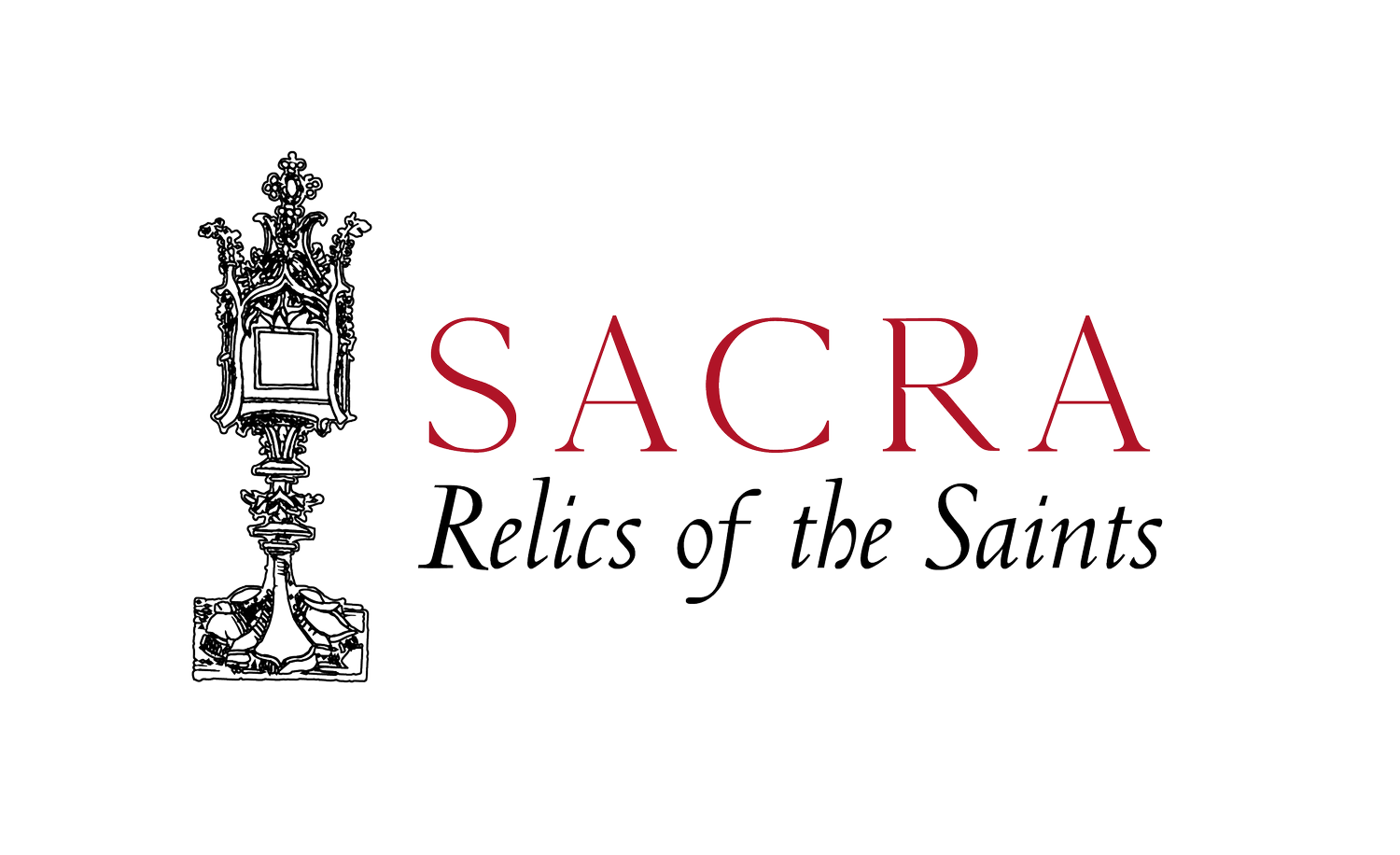What to do with a parish relic?
A substantial relic of the bones of St Josaphat the Martyr, housed in a parish church.
Father arrives at his new parish assignment, we’ll call it the (entirely-fictitious) parish church of St Burgundofara the Abbess (whose name I read this morning in the Martyrology). After getting his bearings in the sacristy, he finds relics in the safe. They are dusty and need some love, but he would like to put them to better use. There a few relics, (probably one of St Pius X), but he is particularly excited to find a relic of his new parish’s patron saint, a little round, gold-coloured theca reliquary a small bone fragment a little glass window, probably from the early days of the parish. He remembers the parish was founded by German Benedictines, so perhaps they brought the relic with them. What should he do with it?
We’ve covered general use of sacred relics in the life of the parish and in the sacred liturgy in other articles (-LINK-). In this article we’d like to make some suggestions on how a parish ought to increase authentic local devotion to a particular saint.
A relic of St Aloysius recently found in the safe.
So, what should Father do with this relic? He remembers hearing about relics in altars in seminary, so he may be tempted to place the relic in his parish’s altar since the church might not have been built with one already inside.
This tendency to place a parish church’s most important relic, say, of its patron saint, inside the altar is well-intentioned but has little basis in history, especially when the relic is only a fragment of the saint. It seems to us like the wrong move. The long-standing practice of the Church is to place the relics of martyrs (-LINK-) in altars, to link our worship to the early days of Mass in the catacombs.
Christians gather for Mass in the catacombs, an artist’s idea.
If Father chooses to place this relic of the parish’s patroness inside the altar, no one can see or venerate it. The whole question of the relics would be left a mystery unless the altar is destroyed to recover them. Parishioners have no visual way of connecting with the saint, and an opportunity for catechesis is wasted. At any rate, Burgundofara is not a martyr. But what if the altar is missing its relics?
Father should instead ask his diocese for an altar stone (-LINK-) from a closed parish, or for two or three of the earlier-mentioned relics, in packets that would have been placed in altars, of lesser-known martyrs.
This will bring some ignored saints greater appreciation, and modern photography affords him an extraordinary opportunity to document these relics and teach his parishioners about the early Roman martyrs. If this is not a possibility, he could contact our Sacra which provides pastors and superiors with information about relics.
An altar stone.
Instead of hiding the relics of his parish’s patroness, Father should take the opportunity to explain the importance of this saint for the parish community, the special spiritual bond they share.
A space place should be prepared as a kind of shrine. The options here are limitless: a side altar, a remodeled choir space, an unused coat-rack nook. A suitable place can often be prepared with some rearranging and a fresh coat of paint.
An example of a previously ‘dead’ space easily be turned into a place of devotion, St Mary, Stillwater, MN.
Father will place the relic in a reliquary, with an image or statue, and candles for the faithful to light. This is a prime opportunity for catechesis and lay participation. Local artisans can be commissioned to craft woodwork and lighting, and the Ladies’ Sodality can coordinate its decoration with flowers. Add a kneeler and holy cards with weekly or monthly devotions to the saint, and here is an authentic and local devotion to the church’s namesake.
A lovely new shrine to Bl Carlo Acutis, St Dominic, Brick, New Jersey. Credit: Thomas P. Costello II.
Here he can create a real centre of devotion for his flock, a ‘safe harbour’ for worried souls. Parishioners can spend time at the parish shrine offering their petitions and thanksgivings, and have a place to come to connect in a sensory way with their heavenly protector. They can bring their children and show them the saint, and ask for her blessing. In this semi-permanent arrangement, the relic can be taken in procession for the parish’s feast day and dedication day.
Canon Jean-Baptiste Commins, ICKSP, rector of St Joseph Shrine, Detroit, in procession carrying a relic of St Joseph on the Shrine’s patronal feast.
After special devotions each week or month, blessings can be given at advertised times, Father can bring the relic on his rounds to teach with at the parish school.
For parish festivals or liturgical seasons, temporary shrines can be easily prepared with similar effect. Giving a focal point for the day’s devotions.
A relic can be a source of grace and solace in a parish, and a focal point for building up its community.
✠









